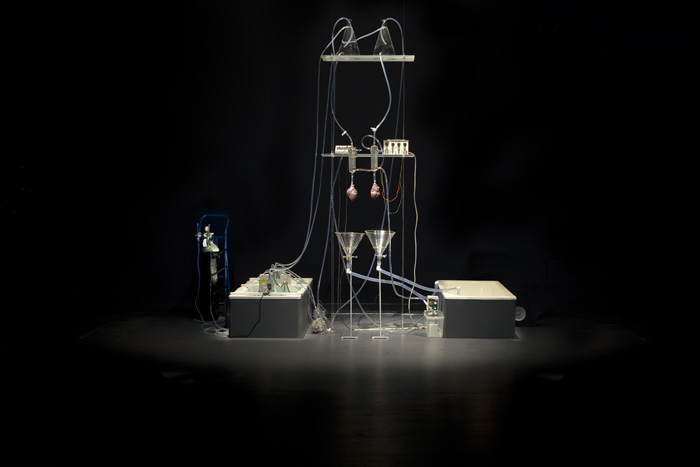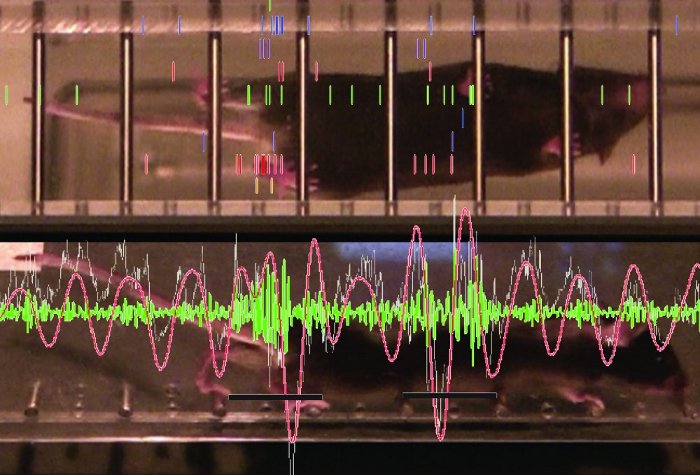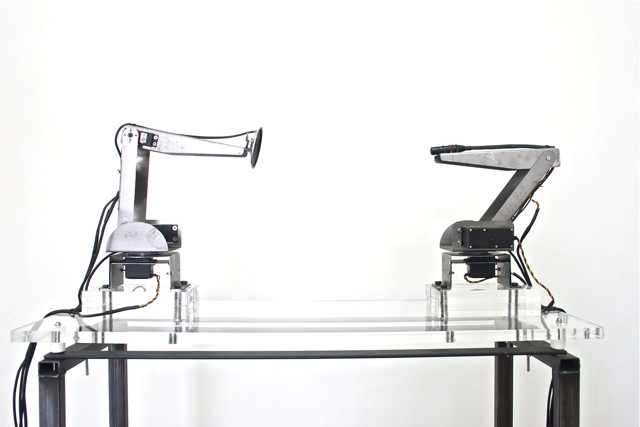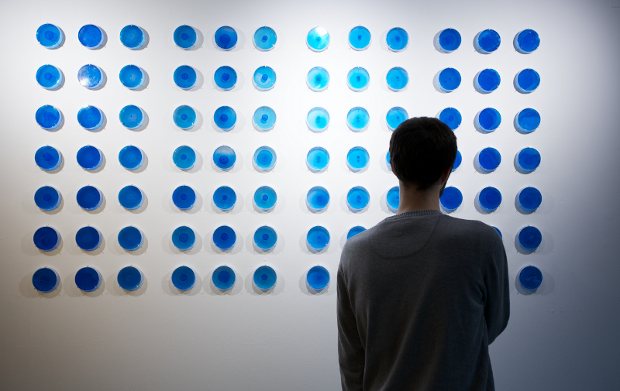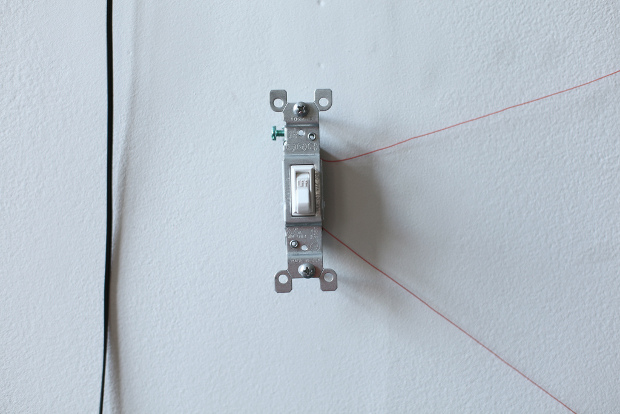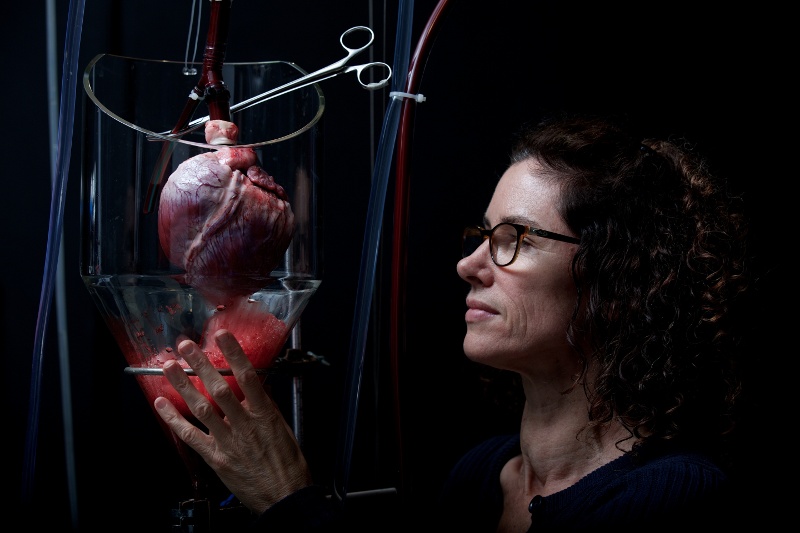
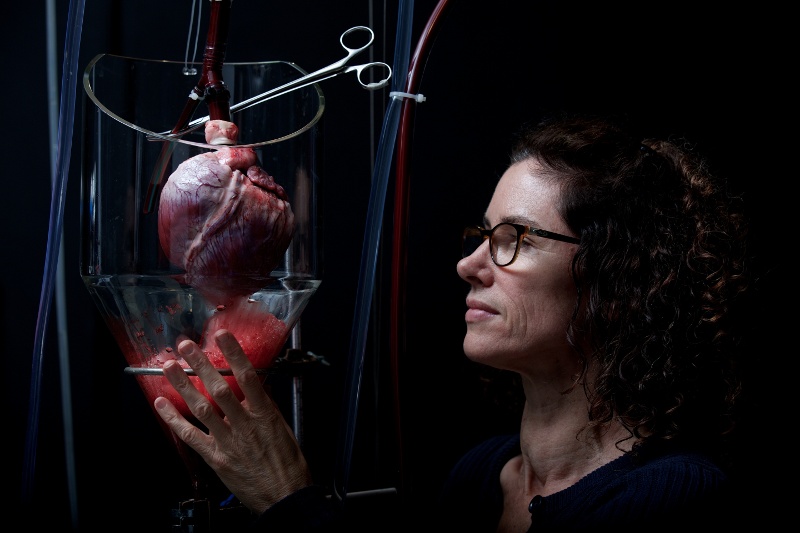
Oscillator opened the Science Gallery's 2013 calendar in startling fashion. An exhibition focused on the important oscillations in our day to day lives held the first European performance of the Body is a Big Place, where two recently removed pigs hearts were reanimated (warning, not for the feint of heart). This towering structure (below) is the bare minimum of technology required to keep our hearts beating and is a striking testament to the bodily processes we take for granted.
Heart beats, brain waves, CPU cycles are all oscillations, as indeed are pendulums, pulsars and earthquakes. Oscillator shone most when it focused on the loops and oscillations closest to our bodies. Next to the The Body Is A Big Place sculpture stood the Telephone Rewired exhibition. Visitors don an EEG helmet and enter a room pulsating with strobe lights, creating a neurofeedback loop between themselves and the exhibition. The flickering lights induce different states of mind by managing your neurons' firing patterns. On the same floor was a live dashboard of the most 'quantified self' rodent yet. The Central Pattern Recogniser logs every aspect of the mouses life as data points and maps it into a slowly moving seismograph of real time data. Personal data as oscillations is certainly an offbeat way to look at self tracking dat-viz.
Sound is the easiest oscillation for most of us to grasp, a guitar wah-wah pedal providing an intuitive example. Plenty of sonorous artworks were present, and a playful cybernetic sculpture from Italian artist Roberto Pugliese best exemplified feedback loops. Sound as Shape explores feedback in new mediums. Nurit Bar-Shai is exploring a new way to visualise music, that is best described as bacterial cymatics. Sound waves are captured in agar, and her bacterial strains explore the 3D imprint in novel ways.
Important as biological rhythms and sonic feedback are it would have been remiss for the exhibition to overlook the oscillations we often feel the most: the speedy cycles of digital computers. ITP alumni CW&T broke the computer down into a minimally interactive art work “1 Bit CPU”. It processes one bit of information every second, and the information in this case is switching a light on or off. Like many of our favourite works it's a slow media experience and helps foreground the sheer scale of how much information is processed every second (your computer is probably 2.5GhZ in speed). Oscillator runs until April 14th 2013.
